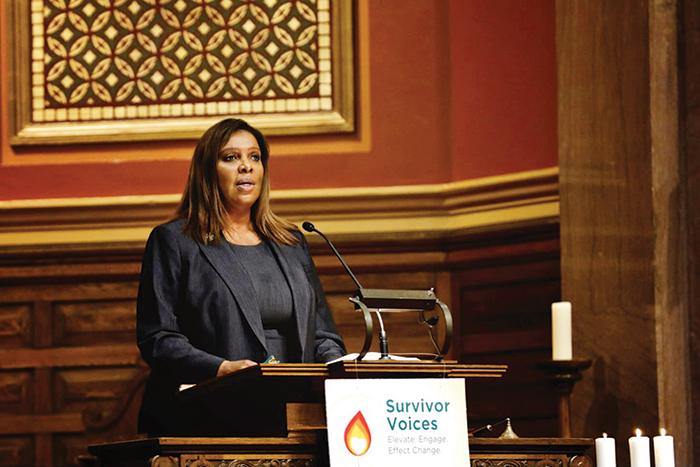Photo Courtesy of AG James
New York AG Tish James
By Forum Staff
Forty- two attorneys general, including State Attorney General Tish James, on Friday reached a $102.5 million settlement with Indivior Inc. (Indivior), the manufacturer of an opioid addiction treatment drug, for monopolistic practices that suppressed the market for generic versions of the drug, Suboxone. The agreement, which was submitted to the court in the Eastern District of Pennsylvania for approval, requires Indivior to pay the states $102.5 million, of which New York will receive approximately $5.7 million. Indivior is also required to inform the states of all Citizen Petitions it submits to the U.S. Food and Drug Administration (FDA) and provide notice about new products and/or a change in corporate control to help ensure that Indivior doesn’t repeat their monopolistic actions.
Today’s agreement resolves a lawsuit filed by the Office of the Attorney General (OAG) and the other states against Indivior for anticompetitive practices. The 2016 lawsuit alleged that Indivior used illegal means to switch patients from Suboxone tablets to its new, patented Suboxone film while attempting to destroy the market for tablets, in order to preserve its drug monopoly.
Suboxone is used to treat people addicted to opioids and is intended to prevent abuse. Suboxone tablets were first approved for sale in the U.S. in 2002. Although Suboxone tablets lacked any patent protection, the FDA designated Suboxone as an “orphan drug,” meaning that it could have no competitors for seven years, because the company was not expected to recoup its research and development costs. Because Indivior’s exclusive right to sell and market the drug in tablet form was set to expire in 2009, Indivior sought to prevent lower cost generic competition and maintain its monopoly by engaging in a range of anticompetitive conduct from 2008 until generic entry occurred in 2013.
First, to thwart the entry of a generic version of Suboxone, Indivior informed the FDA in 2007 that it planned to introduce a new version of Suboxone that was a sublingual film, or a dissolvable oral strip. Because the new version of Suboxone would not be the pharmaceutical equivalent of the original tablet form, pharmacists would not be able to substitute a generic manufacturer’s tablet version for the film version. To persuade the FDA to approve Suboxone film, Indivior claimed that the tablet version — which Indivior itself had marketed in the U.S. for nearly ten years — was unsafe because it presented a high exposure risk to children. The FDA approved Indivior’s patented film version of Suboxone in August 2010.
In early 2012, the FDA ordered Indivior and potential generic manufacturers of the tablet version to participate in a shared Risk Evaluation and Mitigation Strategy to reduce the risk of pediatric exposure to the tablets, but Indivior did not cooperate in this process. Instead, in September 2012, it filed a Citizen’s Petition with the FDA requesting that the agency withhold approval of the tablet version — which Indivior had itself been marketing since 2002 — unless generic manufacturers could satisfy certain procedures to minimize pediatric exposure risks. This petition was ultimately rejected by the FDA, but by the time generics were finally able to enter the market, Indivior had pulled its tablet version from the market and converted the vast majority of the market to the film version for which there was no generic substitute.

